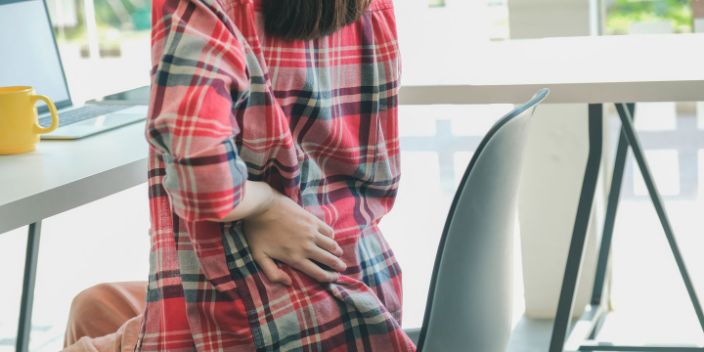How To Tell The Difference Between Back Pain and Kidney Pain | Medical Doctors

Figuring out the mystery of your back pain can sometimes be a tricky task especially if there isn’t an obvious injury to explain it.
There are all sorts of nerves, joints, ligaments, and muscles that can get irritated and create problems back there; and believe it or not, certain organs can also play a part in what you might assume to be your average back soreness.
Take, for example, your kidneys. These bean-shaped organs sit on either side of your spine (just below the ribcage) and spend their time filtering your blood of waste and extra water to make urine. When they get blocked or inflamed, you may experience some bothersome backaches. And these are the sort of agonies that need your attention stat.
“The middle of the kidney itself doesn’t have any nerves,” says Sabitha Rajan, M.D., MSc, a hospice and palliative medicine specialist and associate managing editor at MCG Health.
“So, whenever there’s pain in that area, it means something is causing them to stretch and hit nerves [near your back] and it’s usually something pretty serious.”
When left untreated, inflamed kidneys can lead to kidney damage, high blood pressure, and in rare cases, organ failure. That’s why it’s important to know when your pain is a muscle twinge that just needs rest and ibuprofen, and a kidney issue that needs your doctor’s attention ASAP.
But how exactly do you tell the difference?
To figure that out, we spoke to specialists from MCG Health: a research company that publishes evidence-based, data-driven guidelines to help patients and physicians work together to develop individualized care plans.
These experts not only breakdown how you can begin to identify your back pain, they explain the possible causes, when you should take a trip to your M.D. and what you can expect.
How can you tell the difference between kidney and back pain?
When it comes to differentiating between the two, you want to look at two factors: the location of the pain and the type of sensations you’re experiencing.
Location
Pain that is related to a pulled muscle, ligament strain, or disc damage, can be anywhere up and down your back, but it tends to be around the lower spine (a.k.a. the lumbar region). Reason being: This area bears most of our weight as we go about our daily activities, rendering it more vulnerable to injury, tightness, and muscle fatigue. If there’s a nerve issue, the pain may also radiate down to your butt or to one of your legs or feet, as well.
Kidney pain, on the other hand, manifests around the middle of your back and to either side of the spine. This is called the flank area.
“If you reach around and put your hand naturally where your waist is, it’s right about there,” says Dr. Rajan.
SEE ALSO: Veteran Actress, Ngozi Nwosu Shares Her Story Of Triumph Over Kidney Disease, Death Rumours (Video)
Type of pain
Back pain can range from a sharp burning sensation to a dull ache. You may also experience numbness or tingling in your legs. The key thing to notice about back pain, though, is that it often flares up or lessens depending on how you move, according to Cheyenne Santiago, M.S.N., R.N., and managing editor at MCG.
For example, you may find it super agonizing to bend over and grab your book bag when standing is just fine. Or maybe you observe that sitting for long hours is making your back even crankier when gentle exercise makes you feel a bit better. These are signs that it is probably not a kidney issue.
Also: if you think you injured a muscle, “you may actually be able to push right on the muscle that’s causing you the pain,” says Santiago.
But kidney pain can’t always be discovered through touch — especially, if you’re trying to perform the physical exam on your own. Instead you’ll want to take mental notes on the consistency of your aches. Like back pain, kidney pain can vary from mild to severe, but “kidney pain is pretty consistent and doesn’t change regardless of [the body’s] positioning,” says Santiago.
Kidney pain is also often accompanied by other symptoms. So, if you also:
- Notice your pee looks bloody, dark, or cloudy
- Find that your urine smells funkier than usual
- Have pain when urinating
- Feel like you have to pee all of the time
- Find gravel-like stones in your urine
- Have a fever or chills
- Are nauseous
… you’ll want to have your primary care physician examine your kidney function.
What are the causes of back pain and kidney pain?
Back pain most often occurs when the back is overworked, strained, or frequently subjected to poor posture.
Kidney pain has five major causes (listed from most common to least):
1. Kidney stones
These are hard deposits of minerals and salts that can form in your kidneys and create some excruciating blockage. “If they’re very small stones, they may flush out without any pain,” says Santiago. “If they are larger, the pain is fairly sharp, and it tends to come in waves.” In other words, the pain tends to get worse when the stone moves.
“It’s also typically one-sided,” adds Santiago. “You don’t typically get bad stones on both sides at the same time.”
2. A UTI gone too far
Sometimes a urinary tract infection (UTI) can get out of hand as the harmful bacteria crawls its way through the bladder and up to the kidneys.
“With a kidney infection, it’s going to be that dull, continuous pain,” says Santiago. UTIs that turn into kidney infections are also more likely to cause fever, chills, and nausea.
3. Trauma
Fortunately, your kidneys are guarded by your ribcage and tough back muscles, so kidney injuries aren’t super common. But if you’re into contact sports, happen to be in an accident, or end up in any situation where you take an extremely hard blow to the flank, you could do some organ damage.
4. Polycystic Kidney Disease
PKD is a hereditary condition where clusters of noncancerous cysts develop in the kidneys. “Those can either bleed or become infected,” says Dr. Rajan, and overtime they cause the kidney to enlarge and lose their function. Other symptoms of PKD include kidney stones, UTIs, and high blood pressure.
5. Kidney tumor
This is the least likely cause of kidney pain but these growths can get large enough to create discomfort, says Dr. Rajan. In most cases, these are benign cysts that are not cancerous. However, kidney cancer is not exactly rare either: According t0 the American Cancer Society, it’s among the ten most common cancers in men and women.
When should you go see your doctor about back or kidney pain?
Back pain
Back pain can be incredibly frustrating, but the good news is: It usually gets better on its own. MCG doctors suggest avoiding aggravating movements and giving heat, ice, or anti-inflammatories a try.
If it doesn’t clear up within six to 12 weeks, go see your primary care doctor who can assist you in finding better treatment. If, however, you are experiencing back pain after traumatic accident or have other concerning symptoms, head over to urgent care for immediate treatment.
Kidney pain
If you suspect that you have a kidney issue, you should always schedule an appointment with your primary care physician. “Really anyone who has symptoms of a urinary tract infection or kidney stones should follow up with their physician to make that determination,” says Santiago.
If you are pregnant and experiencing a significant fever see emergency care to get evaluated right away, adds Santiago. Pregnant women are at a greater risk for complications so if primary care isn’t available, urgent care is the best place to seek assistance.
What can you expect when you see your doctor about kidney pain?
If you’re going to see the doctor about regular musculoskeletal back soreness, your M.D. is most likely going to perform a physical exam to figure out what’s causing the problem. And if they think it’s a more serious issue, they may order an ultrasound or some other type of imaging.
A kidney evaluation may involve more testing, however.
First, they’ll ask you about your symptoms and if you’ve had any history of kidney problems in the past or family members with kidney disease. Then they will palpate the area over your kidneys and check your blood pressure and your temperature.
After that, they’ll ask you to pee in a cup. This is called a “urinalysis.” With this test, your doctor is looking to see whether or not they see microscopic blood or smaller crystals. “And depending on how sick you are, they may also order some blood tests to check for other signs of infection and see how well the kidneys are actually doing to clear toxins,” says Dr. Rajan.
If your doctor is very concerned, they might do an ultrasound to look at the structure of your kidneys and check for stones.
Physicians often prescribe antibiotics for UTIs, and in the case of a small kidney stone, they may just recommend drinking more water and taking pain meds until the stone passes. But more serious or complicated conditions could require other procedures, so it’s important to see your doc to receive the proper assessment and treatment.
Bottom Line: Don’t hesitate to see your doctor if you think its kidney pain.
Unlike back pain, you don’t want to have a “wait and see” approach with your kidneys. Infections can get worse and lead to serious tissue damage, while odd growths and stones can impair kidney function. The earlier your doc can prescribe you a care plan, the better they can nip your condition—and your puzzling “back” pain—in the bud.


